
Banguingui is a distinct ethnolinguistic group native to Balanguingui Island but also dispersed throughout the Sulu Archipelago and southern and western coastal regions of the Zamboanga Peninsula in Mindanao, Philippines.

The vinta is a traditional outrigger boat from the Philippine island of Mindanao. The boats are made by Sama-Bajau, Tausug and Yakan peoples living in the Sulu Archipelago, Zamboanga peninsula, and southern Mindanao. Vinta are characterized by their colorful rectangular lug sails (bukay) and bifurcated prows and sterns, which resemble the gaping mouth of a crocodile. Vinta are used as fishing vessels, cargo ships, and houseboats. Smaller undecorated versions of the vinta used for fishing are known as tondaan.
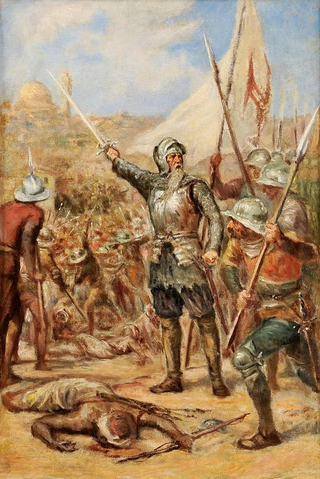
The Capture of Malacca in 1511 occurred when the governor of Portuguese India Afonso de Albuquerque conquered the city of Malacca in 1511.

António de Abreu was a 16th-century Portuguese navigator and naval officer. He participated under the command of Afonso de Albuquerque in the conquest of Ormus in 1507 and Malacca in 1511, where he got injured. Departing from Malacca in November 1511 with four ships, in an exploratory voyage to the 'Spice Islands' of Maluku, he led the first European expedition to reach Timor and the Banda Islands, in Indonesia, in 1512.
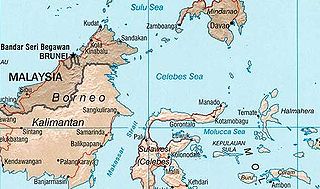
The Sulu and Celebes Seas, a semi-enclosed sea area and porous region that covers an area of space around 1 million square kilometres, have been subject to illegal maritime activities since the pre-colonial era and continue to pose a maritime security threat to bordering nations up to this day. While piracy has long been identified as an ubiquitous challenge, being historically interwoven with the region, recent incidents also include other types of maritime crimes such as kidnapping and the trafficking of humans, arms and drugs. Attacks mostly classify as 'armed robbery against ships' according to the United Nations Convention on the Law of the Sea as they occur in maritime zones that lie under the sovereignty of a coastal state. Incidents in the Sulu and Celebes Seas specifically involve the abduction of crew members. Since March 2016, the Information Sharing Centre (ISC) of the Regional Cooperation Agreement on Combating Piracy and Armed Robbery against Ships in Asia (ReCAAP) reports a total of 86 abductions, leading to the issue of a warning for ships transpassing the area.

Karakoa were large outrigger warships from the Philippines. They were used by native Filipinos, notably the Kapampangans and the Visayans, during seasonal sea raids. Karakoa were distinct from other traditional Philippine sailing vessels in that they were equipped with platforms for transporting warriors and for fighting at sea. During peacetime, they were also used as trading ships. Large karakoa, which could carry hundreds of rowers and warriors, were known as joangas by the Spanish.

Lanong were large outrigger warships used by the Iranun and the Banguingui people of the Philippines. They could reach up to 30 m (98 ft) in length and had two biped shear masts which doubled as boarding ladders. They also had one to three banks of oars rowed by galley slaves. They were specialized for naval battles. They were prominently used for piracy and slave raids from the mid-18th century to the early 19th century in most of Southeast Asia. The name lanong is derived from Lanun, an exonym of the Iranun people.

Garay were traditional native warships of the Banguingui people in the Philippines and were used by the Bruneian Navy. In the 18th and 19th centuries, they were commonly used for piracy by the Banguingui and Iranun people against unarmed trading ships and raids on coastal settlements in the regions surrounding the Sulu Sea.

Salisipan are long and narrow war canoes, with or without outriggers, of the Iranun and Banguingui people of the Philippines. They were mainly used for piracy and for raids on coastal areas. Salisipan resemble a long and narrow bangka that sit low on the water. They are propelled by rowers, steered by an oar at the stern, and are light enough to be hauled ashore. They are typically equipped with woven shields of nipa that could be propped along the sides to protect the rowers against arrows. They are sometimes also known by the more general terms vinta, baroto, or kakap. Salisipan are auxiliary vessels that accompany larger motherships like pangajava, garay, and lanong. Their presence was usually indicative of a larger raiding fleet nearby.

A lancaran or lanchara is a type of sailing ship used in Maritime Southeast Asia. Although similar in shape to Mediterranean galleys, the lancaran was the backbone of the regional fleet of the western half of Nusantara before Mediterranean influence came. For their war fleet, the Malays prefer to use shallow draught, oared longships similar to the galley, such as lancaran, penjajap, and kelulus. This is very different from the Javanese who prefer long-range, deep-draught round ships such as jong and malangbang. The reason for this difference is that the Malays operated their ships in riverine water, sheltered straits zone, and archipelagic environment, while the Javanese are often active in the open and high sea. After contact with Iberian people, both the Javanese and Malay fleets began to use the ghurab and ghali more frequently.

The djong, jong, or jung is a type of sailing ship originating from Java that was widely used by Javanese, Sundanese sailors. The word was and is spelled jong in its languages of origin, the "djong" spelling was a colonial Dutch romanization. In English, the jong lends its name to other ships of similar configuration, called junks, and to their characteristic style of rigging, the junk rig.

Bangka are various native watercraft of the Philippines. It originally referred to small double-outrigger dugout canoes used in rivers and shallow coastal waters, but since the 18th century, it has expanded to include larger lashed-lug ships, with or without outriggers. Though the term used is the same throughout the Philippines, "bangka" can refer to a very diverse range of boats specific to different regions. Bangka was also spelled as banca, panca, or panga in Spanish. It is also known archaically as sakayan.

Kelulus or kalulus is a type of rowing boat used in the Nusantara archipelago. It is typically small in size and propelled using oar or paddle. However, for long-distance voyages, this boat can be equipped with sails. It is not the same as prahu kalulis of the eastern part of the Indonesian archipelago.
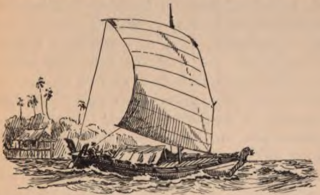
A kakap is a narrow river or coastal boat used for fishing in Malaysia, Indonesia, and Brunei. They are also sometimes used as auxiliary vessels to larger warships for piracy and coastal raids.

Bangkong is the war boat of dayak people, notably used by sea dayaks of Indonesia, Malaysia and Brunei. They are used for riverine warfare in Borneo, but they are also capable of sailing across the sea.

Ghurab or gurab is a type of merchant and warship from the Nusantara archipelago. The ship was a result of Mediterranean influences in the region, particularly introduced by the Arabs, Persians, and Ottomans. For their war fleet, the Malays prefer to use shallow draught, oared longships similar to the galley, such as lancaran, penjajap, and kelulus. This is very different from the Javanese who prefer long-range, deep-draught round ships such as jong and malangbang. The reason for this difference is that the Malays operated their ships in riverine water, sheltered straits zone, and archipelagic environment, while the Javanese are often active in the open and high sea. After contact with Iberian people, both the Javanese and Malay fleets began to use the ghurab and ghali more frequently.
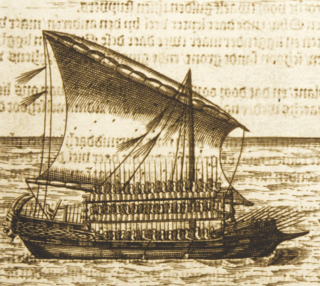
Ghali, gali, or gale are a type of galley-like ships from the Nusantara archipelago. This type of ship only appeared after the 1530s. Before the appearance of this type of ship, several native galley-like ships already existed in the archipelago, some with outriggers. The design of ghali is the result of the impact made by Mediterranean shipbuilding techniques on native shipbuilding, introduced particularly by Arabs, Persians, Ottoman Turks, and Portuguese. The terms may also refer to Mediterranean vessels built by local people, or native vessels with Mediterranean influence.

A juanga or joanga refers to large-sized kora-kora, karakoa and lanong. They are used all throughout the Philippines and Eastern Indonesia, in Maluku smaller versions were popular and are still used to this day (Kora-kora). They are propelled by oars but are not used for carrying cargo.
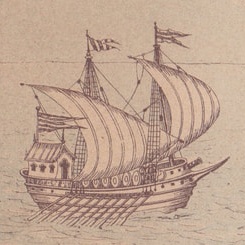
Mendam Berahi was a legendary royal galley said to have been used by the Malacca Sultanate in the early 16th century. This ship is fictional, recorded in the epic Hikayat Hang Tuah, and that type of ship, the ghali, did not exist until after the 1530s.

Austronesian vessels are the traditional seafaring vessels of the Austronesian peoples of Taiwan, Maritime Southeast Asia, Micronesia, coastal New Guinea, Island Melanesia, Polynesia, and Madagascar. They also include indigenous ethnic minorities in Vietnam, Cambodia, Myanmar, Thailand, Hainan, the Comoros, and the Torres Strait Islands.




























